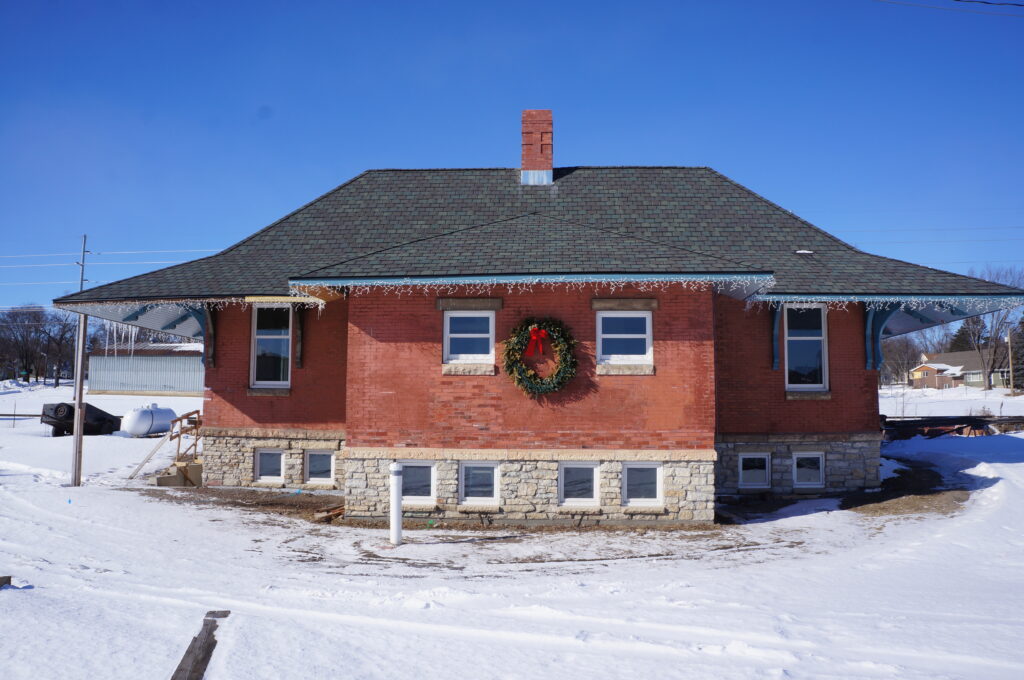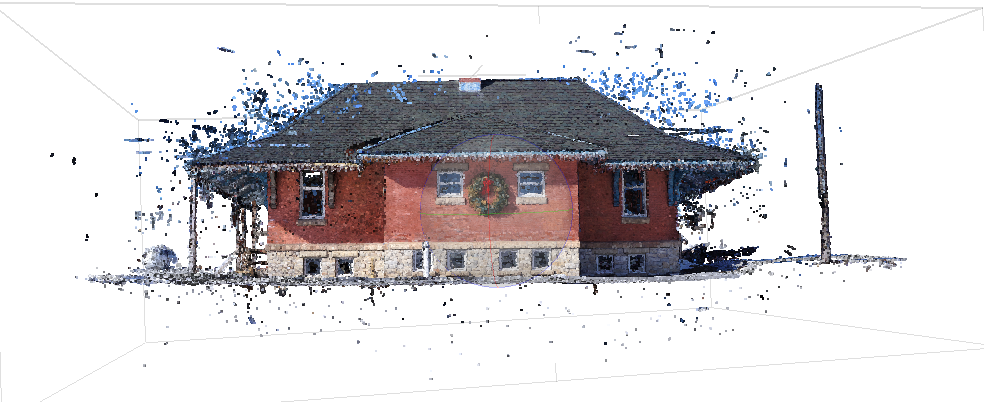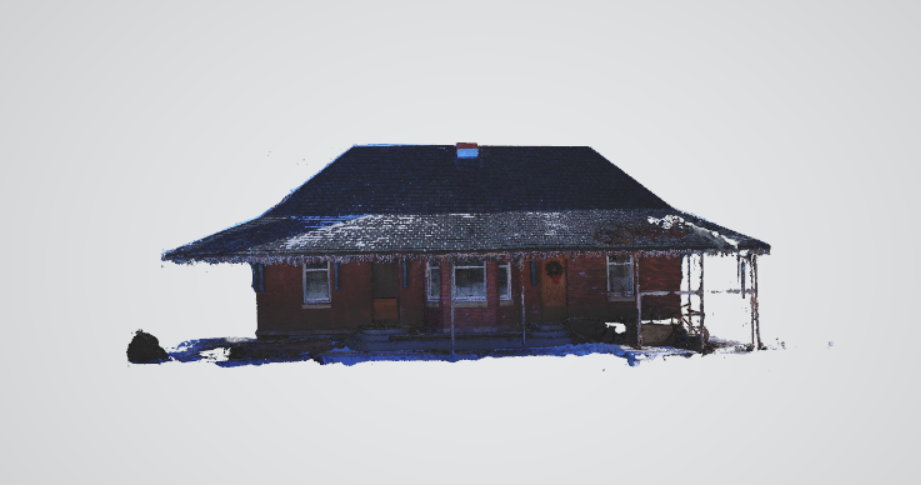In this project I have recreated, using Agisoft and a series of photos, a 3D model of the Northfield Depot!
For this project, I used the many photos provided of the Northfield Depot (see below). They covered most of the building from a standing position (no bird’s-eye view) but were taken from a similar angle. This did leave little coverage of parts of the roof, this is clearly seen in the model. However, the quality of the model created from said photos is mind-blowing to me and I think still allows it to be useful.

Figure 1: Back 
Figure 2: Side 
Figure 3: Front 
Figure 4: Side
To pull this off I used the Agisoft Metashape software. This software is incredibly powerful and can recreate models from images in a way that is accessible without falling too short on quality. This task required four steps:
- Create a point cloud (figure 5).
- Create a dense cloud (figure 6).
- Create a mesh (figure 7).
- Add texture to the mesh (figure 8).

Figure 5: Point Cloud 
Figure 6: Dense Cloud 
Figure 7: Mesh 
Figure 8: Textured Mesh
Each step took increasingly longer amounts of time as more and more computational power was needed. This even resulted in my computer crashing once or twice because I left the polygon count too high for the last two steps.

Front View 
Side View 1 
Back View 
Side View 2
As seen above there are still photos from various angles around the model. Below is an interactive view of the model, the camera axis is off in comparison to the model itself but this was the only way I could find to showcase the model in full 3D-ness. Visible in both the pictures and model there are multiple spots on the roof of the model that are missing. I suspect that has to do with the lack of images covering that section of the building.
There are a couple reason I was personally drawn to this techniques and why I think this process (and outcome) can yield really interesting new insights. I personally am a very visual and tactile person, obviously in a world of online touching things isn’t really an option. However, creating 3D images gets pretty close, especially when you are able to move them around like you would a real object. I find that not only is it more interesting to engage but for this example specifically you can get angles you might not be able to get in real life. For instance, you are able to rotate the model to see very specifc angle, corners, the roof, and even the underside (but that isn’t quite filled out). Being able to create a 3D model also allows those that can’t see this building in person has a reasonable way to get visual information that is a bit more informative than still photos.
This includes me, I had never seen this building in person or outside of 2D photos. After the model finished I was able to get a sense of size, dimensions, and context (how all the pieces fit together). If I had the accompanying information I could imagine adding labels on specific parts of the building or something that tells a bit about the history of the building. Possibly a combination of the two adding labels that mark certain dates elements of the building was added alongside important events. In conjunction with that, if I were to pursue this project further I would ideally take more photos, including those the view the building from above. Hopefully, this would provide a more complete model, one that could be 3D printed completing my wish for a more tactile product.
